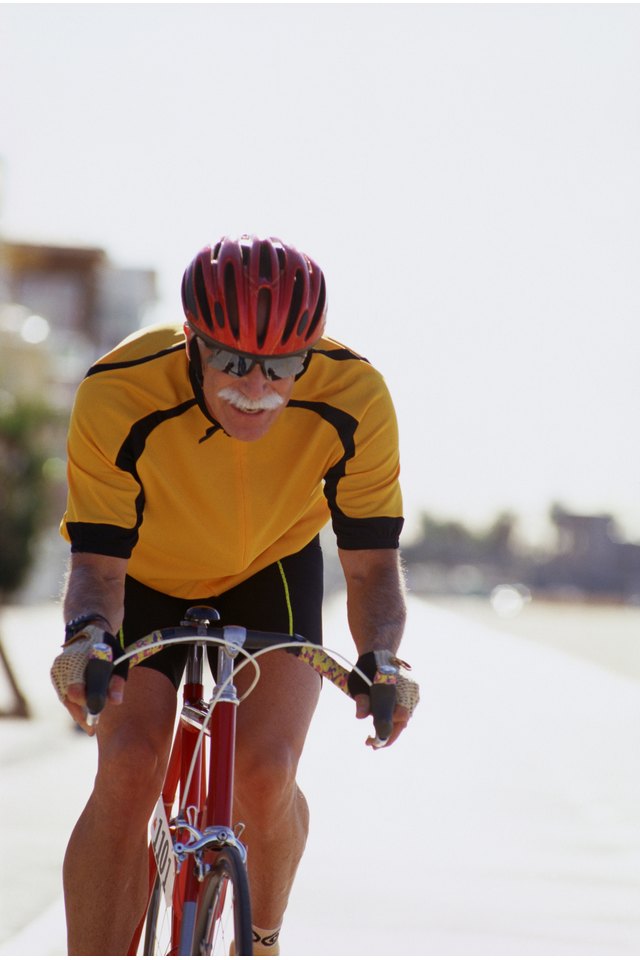Proper Body Mechanics for Bike Riding

Like most folks, you probably learned to ride a bike as a child, and once you learn, you never forget. But whether you ride for recreation, competition or as a sustainable mode of transportation, making small changes to the way you ride can have a huge difference in performance. More importantly, improving your technique will spare your joints and muscles so that you can enjoy pain-free cycling for years to come.
Foot Mechanics
Your body works as a kinetic chain, meaning that poor alignment at one joint can lead to problems in other areas of the body. Because you apply force through your feet, poor placement can cause pain and injury to the knees, ankles and achilles tendons. Individuals who over-pronate, meaning the ankles roll inward, are most vulnerable to injury. Force should be applied to the pedal at the forefoot. Your ankles should not roll in toward the bike frame. To achieve optimal force and minimize injury, maintain a 90-degree angle between your feet and lower leg through all phases of the crank rotation. Proper cycling shoes and the use of toe clips or cleats will help you achieve optimal foot alignment.
Knees and Hips
The muscles that generate force for cycling cross over both your hips and knees, placing large amounts of stress on those joints. Optimal alignment of the hips and knees is determined by your position in the saddle and its height. When seated, center your weight over your sitting bones so that you are not putting pressure on your genitals, or on the nerves and arteries that descend from the base of your spine. Adjust your bike so that your reach does not cause your hips to roll forward. As you cycle, your kneecaps should face forward, and your knee should be slightly bent when the crank is at the six-o'clock position. Attempt to keep an even cadence, making perfect circles and applying equal force with both legs.
Trunk and Upper Body
Proper positioning of your upper body can conserve energy, protect your spine and promote efficient breathing. When riding, your upper body should be relaxed. Do not clench your fists or hunch your shoulders. Maintain a neutral spine and roll your shoulders back and down. To optimize lung capacity, breathe deeply through your abdomen, allowing your diaphragm to rise and fall. Situps and pushups can strengthen the muscles of your trunk and upper body to provide maximal support for good cycling posture.
Stretch for Balance
If you cycle on a regular basis, routinely stretching is critical. Because of the body position unique to cycling, failure to stretch can lead to debilitating postural imbalances and injury. Key areas are the calves, shins, hamstrings, hip flexors and pectoral muscles. Stretching the lower back reduces pressure on your intervertebral disks. Stretches for the neck and shoulders will alleviate tension in the upper spine. Yoga and Pilates are ideal cross-training activities for cyclists because they promote balanced muscle tension at the joints.
References
Writer Bio
Michelle Matte is an accomplished fitness professional who holds certifications in personal training, pilates, yoga, group exercise and senior fitness. She has developed curricula for personal trainers and group exercise instructors for an international education provider. In her spare time, Matte writes fiction and blogs.
